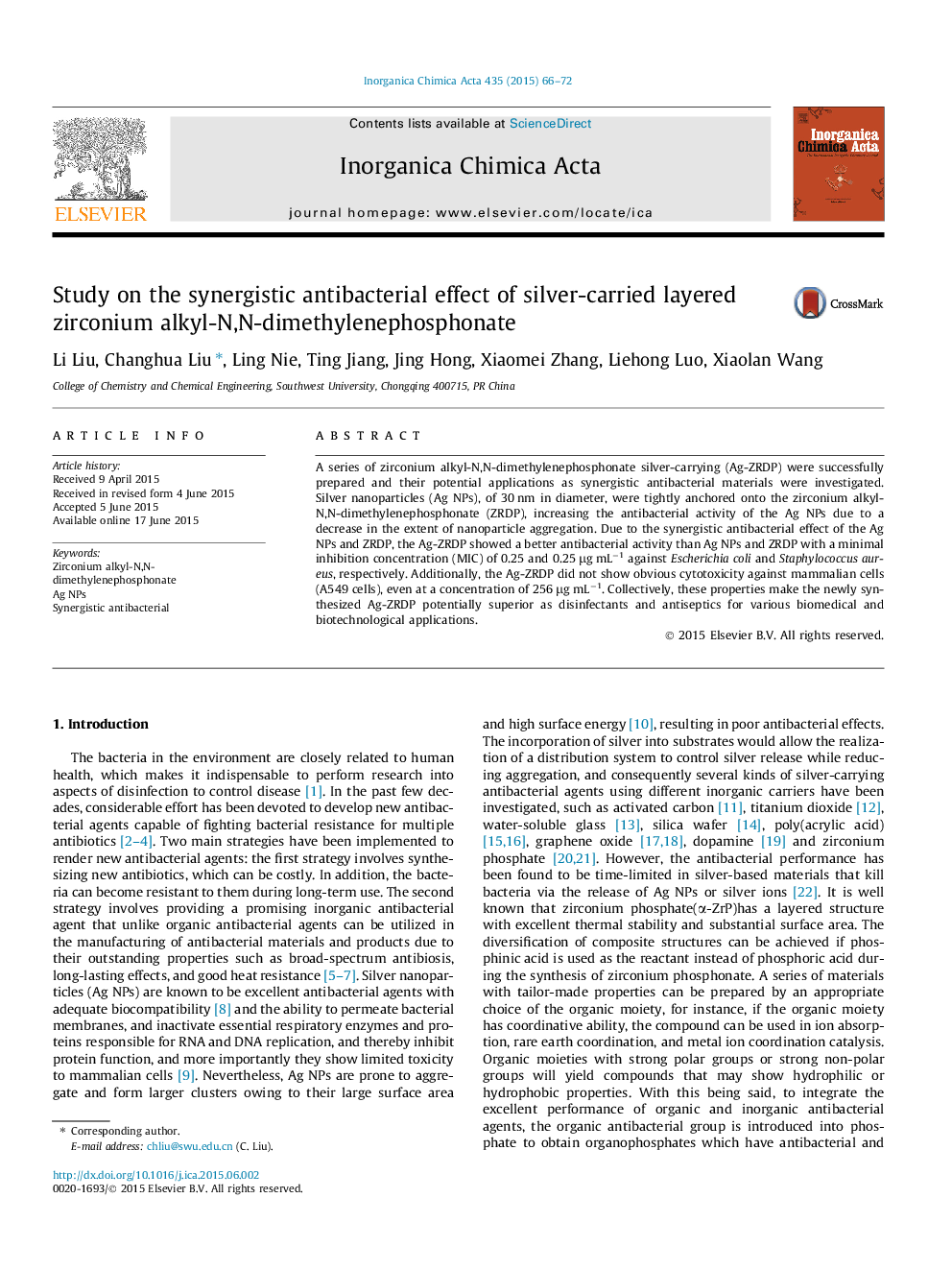| Article ID | Journal | Published Year | Pages | File Type |
|---|---|---|---|---|
| 1308941 | Inorganica Chimica Acta | 2015 | 7 Pages |
•Organic–inorganic synergistic antibacterial agent was made at first.•The drug resistance of organic bactericide can be resolved.•The aggregation of Ag NPs can be inhibited.•The problem of free Ag NPs are cytotoxic to mammalian cells is solved.
A series of zirconium alkyl-N,N-dimethylenephosphonate silver-carrying (Ag-ZRDP) were successfully prepared and their potential applications as synergistic antibacterial materials were investigated. Silver nanoparticles (Ag NPs), of 30 nm in diameter, were tightly anchored onto the zirconium alkyl-N,N-dimethylenephosphonate (ZRDP), increasing the antibacterial activity of the Ag NPs due to a decrease in the extent of nanoparticle aggregation. Due to the synergistic antibacterial effect of the Ag NPs and ZRDP, the Ag-ZRDP showed a better antibacterial activity than Ag NPs and ZRDP with a minimal inhibition concentration (MIC) of 0.25 and 0.25 μg mL−1 against Escherichia coli and Staphylococcus aureus, respectively. Additionally, the Ag-ZRDP did not show obvious cytotoxicity against mammalian cells (A549 cells), even at a concentration of 256 μg mL−1. Collectively, these properties make the newly synthesized Ag-ZRDP potentially superior as disinfectants and antiseptics for various biomedical and biotechnological applications.
Graphical abstractA series of zirconium alkyl -N,N-dimethylenephosphonate (ZRDP) with tailor-made antibacterial properties were successfully synthesized, following by coordinating and self –reducing methods, a series of silver-carried zirconium alkyl -N,N-dimethylenephosphonate (Ag-ZRDP) were successfully prepared.Figure optionsDownload full-size imageDownload as PowerPoint slide
